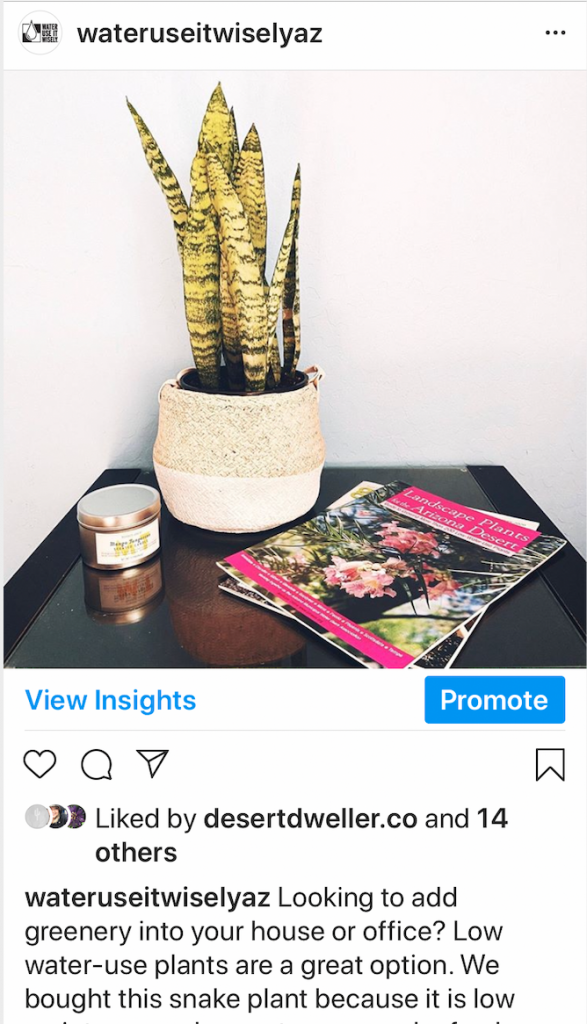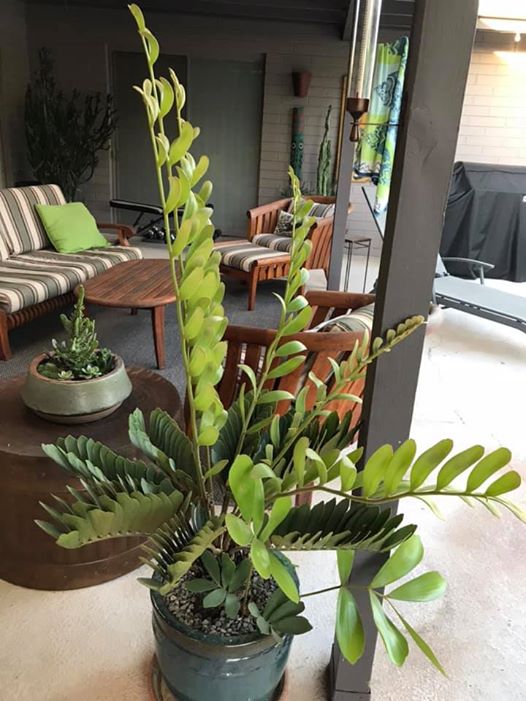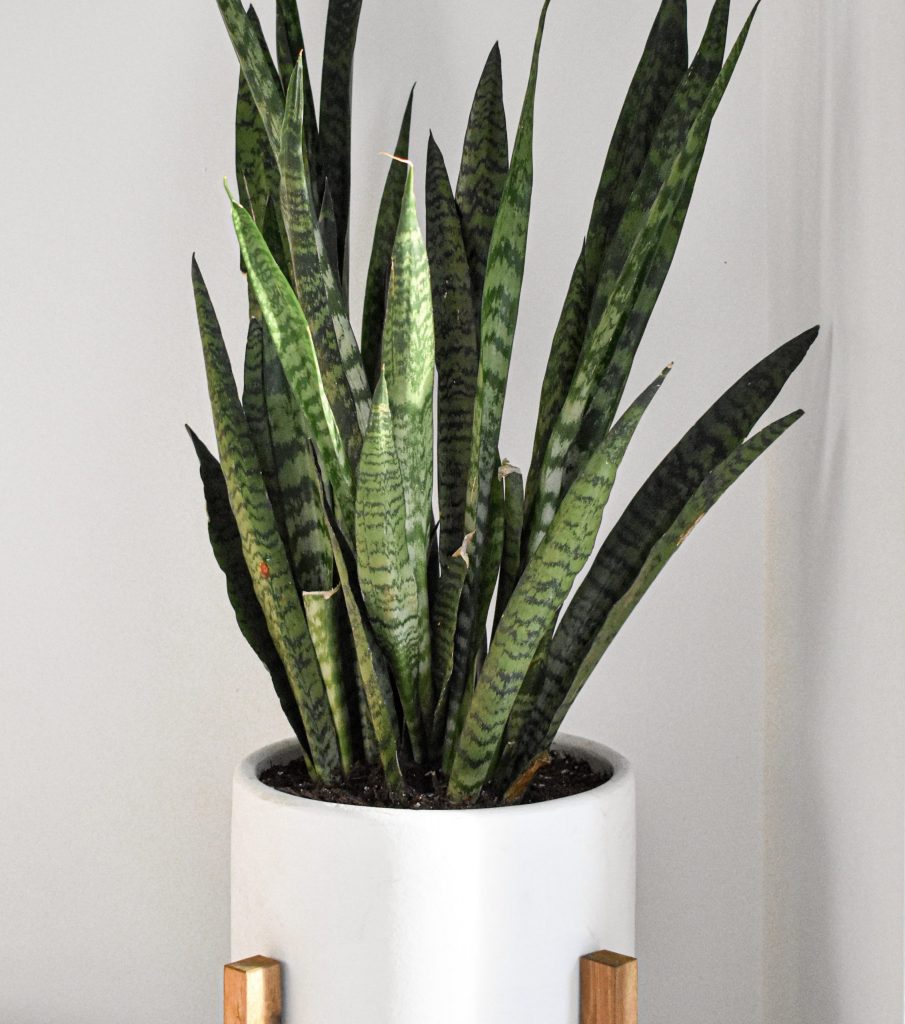Indoor plants are all the rage right now, and we get why. Houseplants are a great way to bring nature indoors and caring for them can be therapeutic, too. For some urban dwellers, their plants even take on the role similar to domestic pets (have you named your plants?). They provide many benefits, but like outdoor plants, some require more care and water than others. This month we are featuring two indoor plants as our Plant of the Month (rare for us). But, like we always do, we are featuring plants that are drought tolerant and very low maintenance.

The sculptural Snake Plants take a lot of abuse and still look great.
The Snake Plant, Dracaena trifasciata, or Mother-In-Laws Tongue, is a beloved (like your mother-in-law ) indoor plant. [If you are confused with the scientific name, it might be because it was known as Sansevieria trifasciata until 2017 when it was botanically reclassified]. Its popularity stems from its beautiful green and yellow striped sword-like leaves, purifying air qualities, and its ability to survive neglect and unfit conditions. Those qualities make it an excellent house plant for beginners and pros alike.
There are a number of different cultivars available offering different heights, forms, and leaf coloration or patterns. For example, Dracaena cylindrica (AKA Dracaena angolensis) is made up of stout, round spears. This cultivar works well indoors, but also makes a great landscape or container plant for patios or other shady areas in our Arizona desert landscapes.
Caring for a Snake Plant is almost effortless, you would have to try to kill this plant.
These African native plants can grow and survive just about anywhere. They can tolerate low humidity and temperatures as low as 50 degrees. Indirect sunlight is ideal for this plant, but snake plants can endure both very low light and even some full sunlight. Be cautious to not over water this plant because it can easily rot. Wait until the soil is dry between waterings and water less in the winter.
Zamia is another crowd-pleasing and low-maintenance houseplant.

Zamioculcas zamiifolia, commonly called Zamia or ZZ Plant is also native to Africa. This plant has long folds of attractive dark green, glossy stems of foliage that arch out from a central crown. It has a fern-like appearance with tightly packed leaflets. They generally grow 2-3 feet in height and will need about the same amount of space to spread in width.
Durability and toughness define this plant. Zamia handles low indirect light as well as the dry air one might have in their home. The greatest problem you will likely have with this plant is that it will eventually get too large for the pot or the space where you placed it. In that situation, it’s easy to divide the plant and share it with your friends and family.
Because the fleshy rhizomes (underground stems) on this plant help to store water, keep your ZZ Plant on the dry side. One testimonial we read stated that they watered a ZZ Plant in their office only 6 times in 16 months. However, depending on how rootbound the plant is, it’s recommended to give it a good soak every 14-days or so and allow to dry thoroughly between watering. Like some of the Snake Plants, the Zamia or ZZ Plant is also a nice addition to our xeriscape gardens in our Arizona landscapes. Be sure to grow in pots on patios or in protected shady areas. The plant may sustain frost damage below 32-degrees.
Clear the air!
If you are looking to start your indoor plant collection these two plants are a great starting point. The Snake Plant and the Zamia or ZZ Plant are low-maintenance and drought-tolerant which makes them perfect plants to grow in our arid climate! These and other plants have also been found to improve indoor air quality. NASA found that many houseplants remove pollutants like formaldehyde, benzene, and ammonia from a room. Needless to say, these would be perfect plants for your bedroom and workspace.
Although great for purifying and cleansing the air, Snake Plants are toxic for house pets. For more information on toxic plants for pets click here.
Did you know that up to 70% of water use is outdoors? That is why we love low-water-using plants and feature them each month. You can learn more about water-thrifty landscape plants on our Arizona Low-Water-Use Plants page. Visit our page on Choosing and Planting Low Water-Use Plants for tips on plant selection and how to plant properly. Also, be sure to read through all of our featured Plant of the Month blogs!
If you enjoyed this blog post, we handpicked three others you might enjoy:
- Plant of the Month: Aloe
- Five Ways You Can Save Water You Probably Never Thought About
- Arizona Water Facts and Tips


